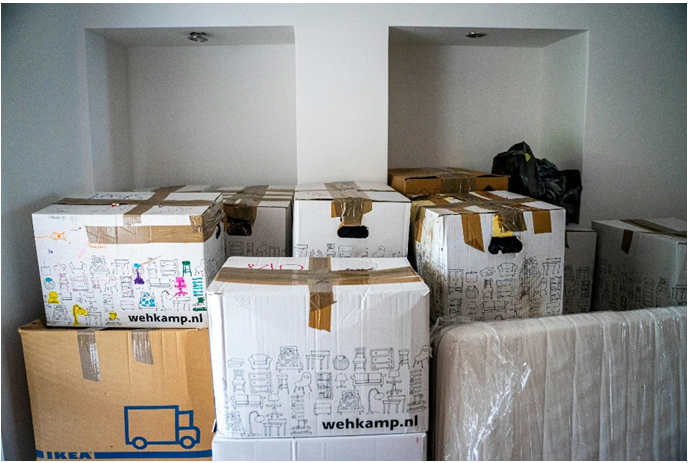Moving out of your current home ranks among life’s most stressful experiences, often bringing a whirlwind of emotions, endless to-do lists, and unexpected challenges.
Whether you’re relocating to a new city for work, upgrading to a larger space, or simply seeking a fresh start, the process can quickly become overwhelming without proper planning and organization. The good news is that with the right approach and strategic preparation, you can transform this potentially chaotic experience into a smooth, manageable transition.
The secret to a stress-free move lies in breaking down the enormous task into smaller, actionable steps. By addressing each aspect of your move systematically, you’ll maintain control over the process while minimizing last-minute panic and costly mistakes. From decluttering your belongings to coordinating logistics, every decision you make contributes to either simplifying or complicating your moving experience.
Hire Professional Cleaning Services for a Smooth Handover
One of the most overlooked yet critical aspects of moving out is ensuring your current property is left in pristine condition. This step is particularly crucial if you’re renting, as it directly impacts your chances of receiving your full security deposit back. Rather than attempting to tackle this massive job yourself amid packing chaos, consider enlisting professional help that meets landlord expectations and property standards.
Professional cleaners bring specialized equipment, effective products, and systematic approaches that deliver results far superior to typical DIY efforts. If you’re vacating a rental property, end of tenancy cleaning services are specifically designed to meet the thorough standards landlords and letting agents expect during final inspections, covering everything from spotless carpets to gleaming appliances and sanitized bathrooms.
By delegating this responsibility to experts, you free up valuable time and energy to focus on other moving priorities while ensuring the property meets all contractual obligations.
Start Planning Early and Create a Comprehensive Timeline
Time is your greatest ally when organizing a move, and starting early makes all the difference. Begin planning at least six to eight weeks before your moving date, creating a detailed timeline that breaks down tasks week by week. This forward-thinking approach prevents the dreaded last-minute scramble and allows you to tackle responsibilities at a comfortable pace.
Your timeline should include everything from notifying your landlord or scheduling property viewings to updating your address with banks, utility companies, and subscription services. Include deadlines for booking moving services, purchasing packing supplies, and scheduling final meter readings.
Declutter Ruthlessly Before You Pack
Moving presents the perfect opportunity to evaluate your possessions and eliminate items that no longer serve you. Before you even think about reaching for packing boxes, conduct a thorough decluttering session in every room. This process not only reduces the volume of items you need to transport but also saves money on moving costs and helps you start fresh in your new space.
Sort your belongings into four categories: keep, donate, sell, and discard. Be honest with yourself about what you actually use and need. That exercise equipment gathering dust or those clothes that haven’t fit for years deserve a new home where they’ll be appreciated.
Organize Your Packing Strategy Room by Room
Approach packing methodically rather than randomly grabbing items from different areas of your home. Tackle one room at a time, completing it fully before moving to the next. This systematic approach keeps you organized and makes unpacking at your destination infinitely easier.
Label every box clearly with its contents and the designated room in your new home. Use colour-coded stickers or markers for different rooms to enable quick identification. Pack heavier items in smaller boxes to avoid making them too heavy to lift, and use larger boxes for lighter, bulkier items like bedding and pillows.
Notify All Relevant Parties and Update Your Information
Failing to update your address with important organizations creates unnecessary headaches down the line. Create a comprehensive list of everyone who needs to know about your move, including your employer, banks, insurance providers, healthcare providers, and government agencies. Don’t forget about magazine subscriptions, online retailers, and loyalty programs.
Set up mail forwarding with your postal service to catch any correspondence you might have missed. This safety net ensures you don’t miss important documents or bills during the transition period.
Coordinate Utilities and Services at Both Properties
Schedule disconnection of utilities at your current property and connection at your new home to ensure seamless service. Contact electricity, gas, water, internet, and cable providers well in advance to arrange appropriate dates.
Moving doesn’t have to be the nightmare scenario many people experience. By implementing these strategic steps and maintaining an organized approach throughout the process, you can significantly reduce stress and create a positive moving experience. Remember that preparation is paramount—the more thoroughly you plan and execute each phase of your move, the smoother your transition will be.






